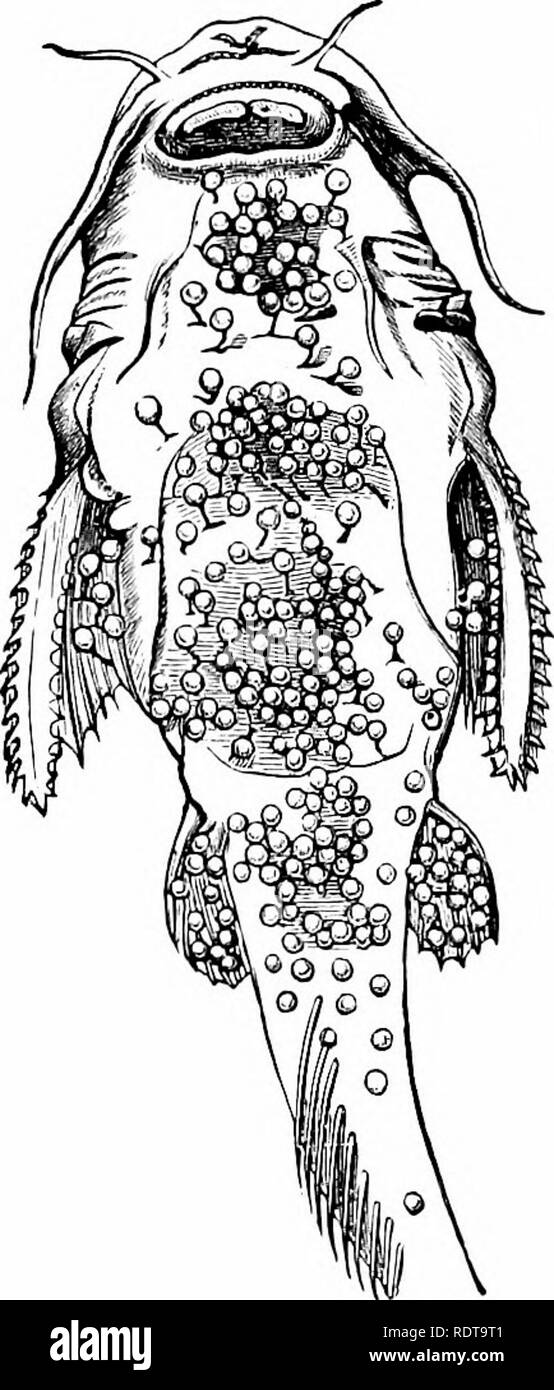. Zoology. Zoology. 162 ZOOLOGY. to the batteries of the eel are supplied by the Tentral branches of about two hundred pairs of spinal nerves. Succeeding these fish are the herrings, represented by the common English herring, Cliqiea harengus, which in- habits both sides of the North Atlantic, extending on the American side from the polar regions to Cape Cod; the alewife, P omoloh u s pseudoliarengus, which ranges from Newfound- land to Florida; the shad, Alosa sapidissiina, which has the same geographical distribution as the alewife; and the menhaden or pogy, Brevoortia tyrannus, which extend

Image details
Contributor:
The Book Worm / Alamy Stock PhotoImage ID:
RDT9T1File size:
7.1 MB (345.6 KB Compressed download)Releases:
Model - no | Property - noDo I need a release?Dimensions:
1032 x 2421 px | 17.5 x 41 cm | 6.9 x 16.1 inches | 150dpiMore information:
This image is a public domain image, which means either that copyright has expired in the image or the copyright holder has waived their copyright. Alamy charges you a fee for access to the high resolution copy of the image.
This image could have imperfections as it’s either historical or reportage.
. Zoology. Zoology. 162 ZOOLOGY. to the batteries of the eel are supplied by the Tentral branches of about two hundred pairs of spinal nerves. Succeeding these fish are the herrings, represented by the common English herring, Cliqiea harengus, which in- habits both sides of the North Atlantic, extending on the American side from the polar regions to Cape Cod; the alewife, P omoloh u s pseudoliarengus, which ranges from Newfound- land to Florida; the shad, Alosa sapidissiina, which has the same geographical distribution as the alewife; and the menhaden or pogy, Brevoortia tyrannus, which extends from the coast of Maine to Cape Hatteras. Tliese, with the cod, hake, haddock, salmon, and a few other species, comprise our most valuable ma- rine food-fishes. The fisheries of the United States yield about $44, 000, 000 annually, whilst those of Great Britain amount in value to about 140, 000, 000, and those of Norway to about 110, - 000, 000. The herring (Fig. 206) is a deep-water fish which visits the coast in spring in immense in which the females are as numerous as the males, to spawn, selecting sboal water from three to four fatlioms deep in bays, wliere the eggs hatch. At this season, and early in the summer, liundreds of millions are caught, especially on the Canadian, Ncwfonndland, and Labrador coasts. Tlie English wliitcbait is the young of the herring. The herring is caught in deep nets with. Fig. 205.—-4*j>re(io, a Siluroid flRh, with little sacs filled with eggs sr-j-iools attached by slender stalks. three times. Please note that these images are extracted from scanned page images that may have been digitally enhanced for readability - coloration and appearance of these illustrations may not perfectly resemble the original work.. Packard, A. S. (Alpheus Spring), 1839-1905. N. Y. , Holt